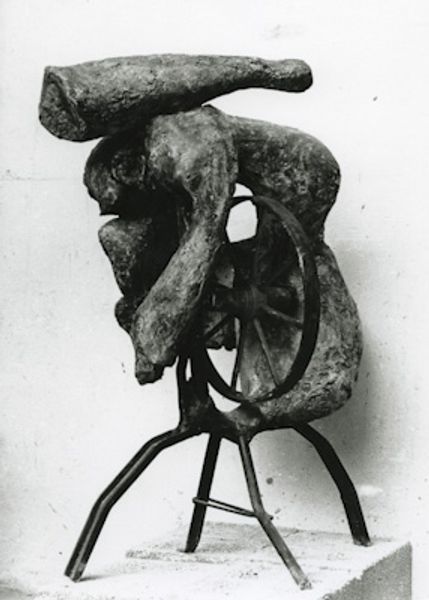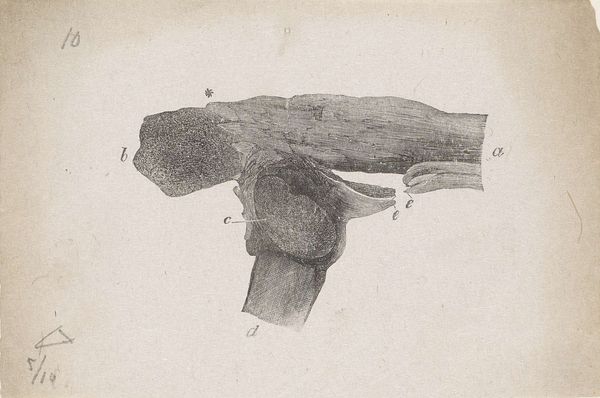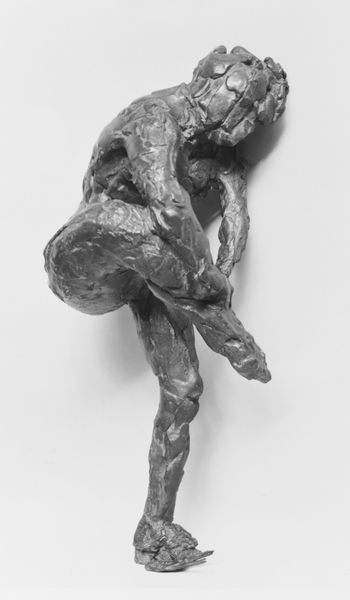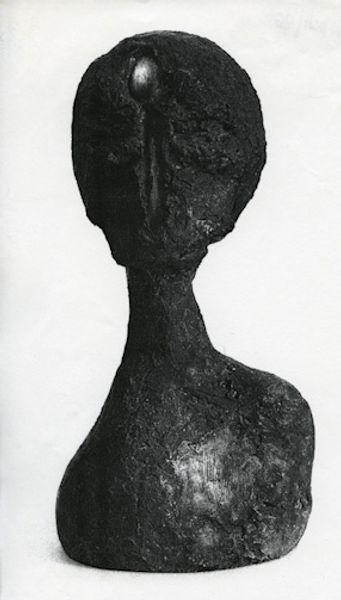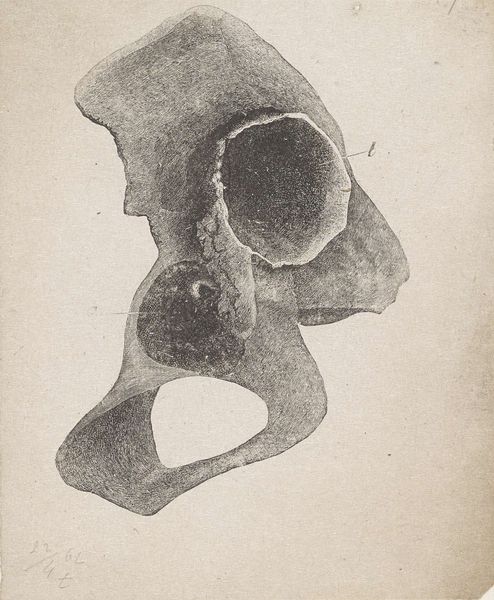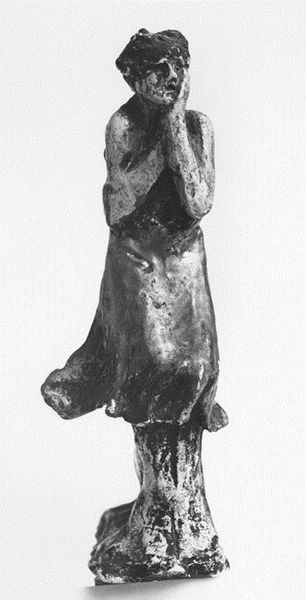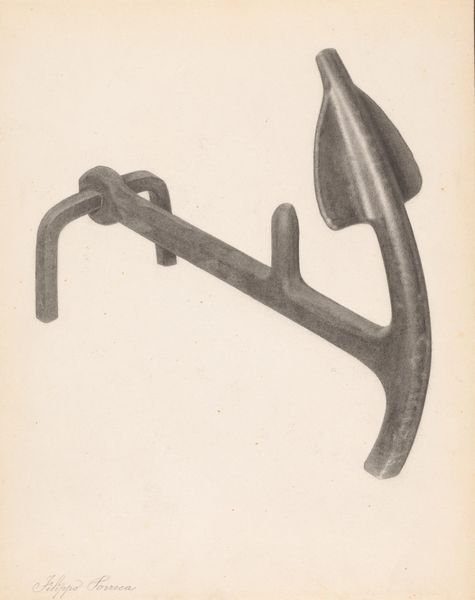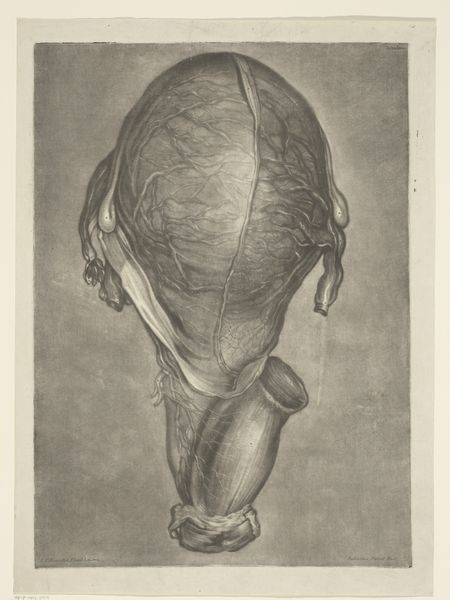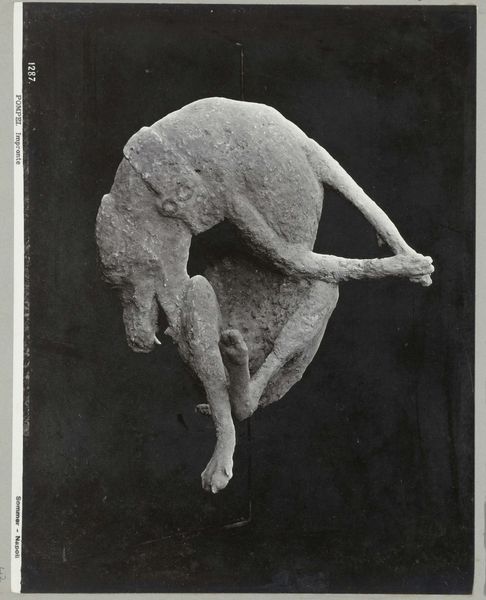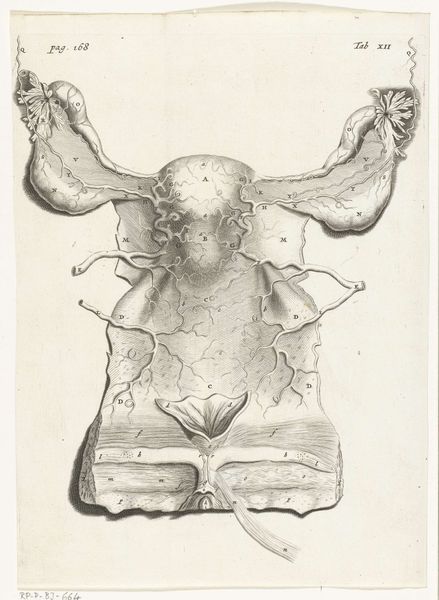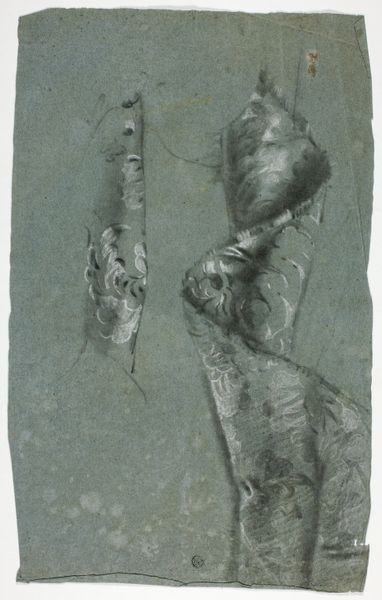
matter-painting, assemblage, sculpture
#
abstract-expressionism
#
matter-painting
#
assemblage
#
sculpture
#
charcoal drawing
#
form
#
sculpture
#
monochrome
Copyright: Alina Szapocznikow,Fair Use
Curator: This striking piece is entitled "Derwisz," an assemblage created around 1960 by Alina Szapocznikow. Its textured surfaces and the interplay of dense matter with slender linear elements are immediately compelling. Editor: It gives me a somber impression. The monochrome palette certainly contributes to that, as do those dark, almost tormented-looking forms rising on what appears to be two very precarious supports. There is some element of brutality, isn’t there? Curator: In some ways, yes. Szapocznikow's practice, particularly in this period, engaged with the body, not in celebration, but in the face of mortality and trauma. She often explored how we grapple with the body’s fragility, which was influenced by her experiences as a Holocaust survivor. Editor: The title, “Derwisz,” connects it to a specific cultural and perhaps spiritual practice – that of the whirling dervishes who perform a Sufi dance as a form of worship. What is that link? Curator: Dervishes seek a kind of ecstatic union, transcendence through movement. Perhaps Szapocznikow saw something in their practice that echoed her own struggles: the attempt to move beyond, or perhaps transform, the suffering she experienced. Consider the form itself - seemingly fixed, monumental, yet simultaneously fragile. Editor: So it’s about finding some kind of release? Despite its oppressive character and weighty matter, I keep coming back to its title. Does its form give visual expression to whirling? The sculpture certainly embodies movement in spite of its rigid composure and the heavy darkness of its physical components. Curator: The sculpture embodies contradictions. Szapocznikow forces us to reconcile apparent opposites, reflecting, I think, a profound aspect of the human condition. It reminds me how historical forces can be reflected and refracted through cultural symbols. Editor: For me, that tension between movement and stillness really opens up an interpretation beyond the obvious trauma and towards the possibility of resistance, both physical and spiritual. The fact that something so monumental looks to be almost defying gravity fascinates me most. Curator: Indeed, its evocative power is undeniable, even decades later. Its unsettling beauty really urges one to remember the individual experience as inextricably entwined with greater social forces.
Comments
No comments
Be the first to comment and join the conversation on the ultimate creative platform.
